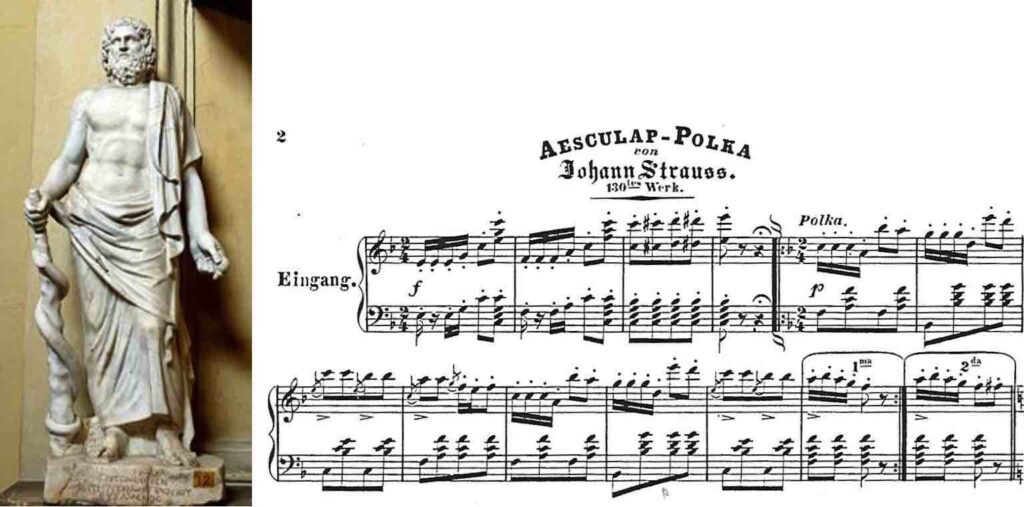Johann Strauss II (1825-1899) Aesculap-Polka, op. 130

Die Aesculap-Polka war die erste Widmungskomposition des jungen Johann Strauss für die traditiosreichen Bälle der Hörer der Medizin an der Universität Wien, also für den Medizinerball am 25. Jänner 1853 bestimmt und wurde im Rahmen dieser zum Besten des Fonds für erkrankte Studenten im Etablissement ‘Zum Sperl’ abgehaltenen Veranstaltung unter der Leitung des Komponisten uraufgeführt. Wie früher dem Vater, schrieben nun die Veranstalter des Balles auch dem Sohn den Titel für seine Widmungskomposition vor. Im Jahre 1853 wünschten sie sich den griechischen Gott der Heilkunde, Asklepios (lat. Aesculapius) gleichsam zum Schirmherr ihres Balles.

The Aesculap Polka was the first dedication composition by the young Johann Strauss for the traditional ball of the medical students at the University of Vienna, i.e. for the medicine ball on January 25, 1853, and was awarded as part of this to the best of the fund for sick students in the Etablissement ‘Zum Sperl’, conducted by the composer. As in the past for the father, the organizers of the ball now gave the son the title for his dedication composition. In 1853 they wished the Greek god of medicine, Asklepios (lat. Aesculapius) to be their patron, so to speak.
| sound sample / Tonbeispiel | score/parts PDF download: € 38,- | add to cart / in den Warenkorb |
